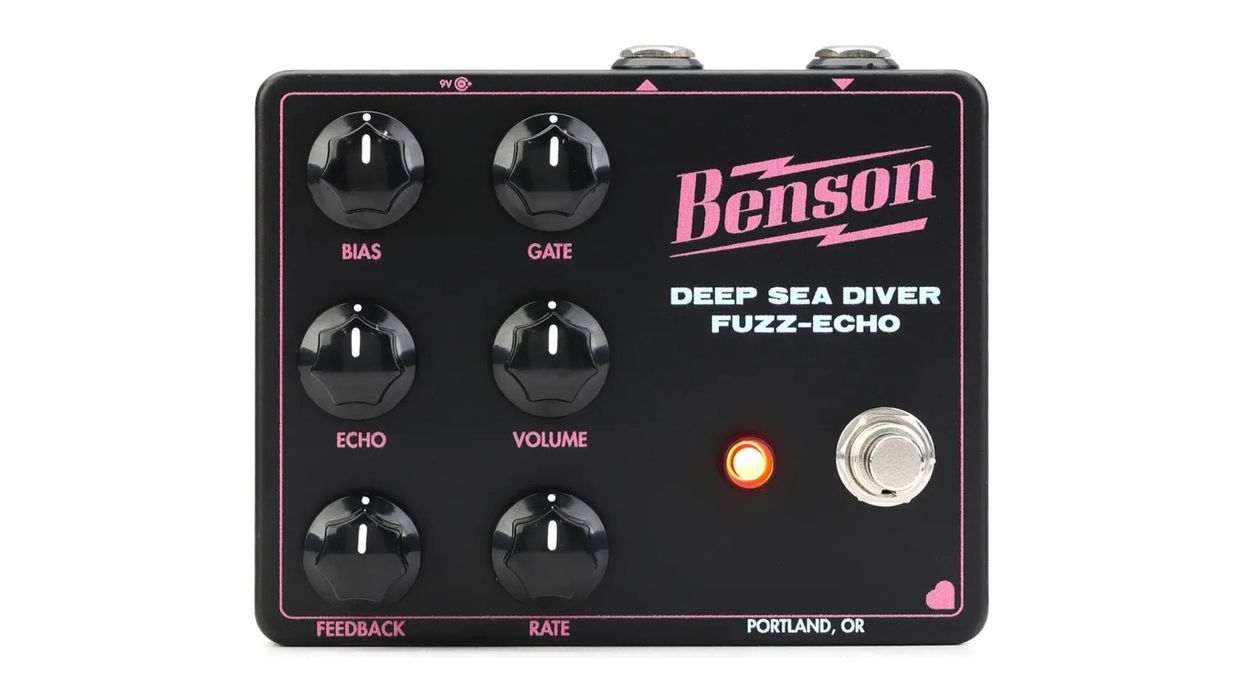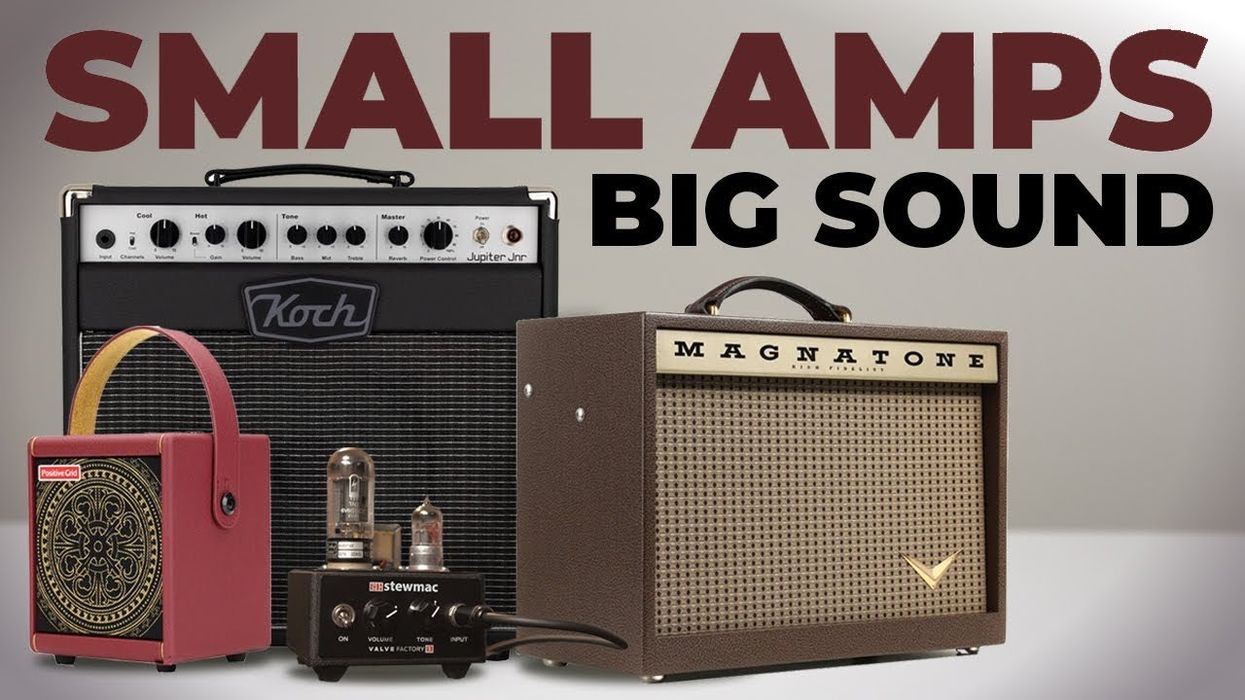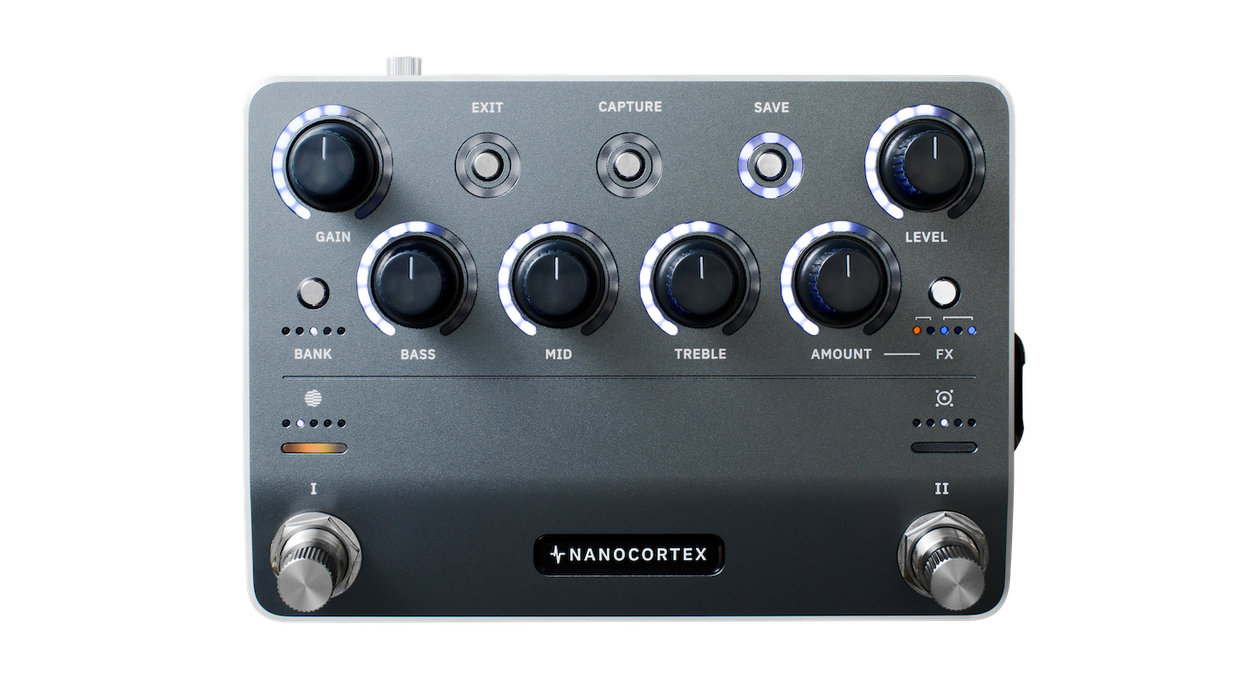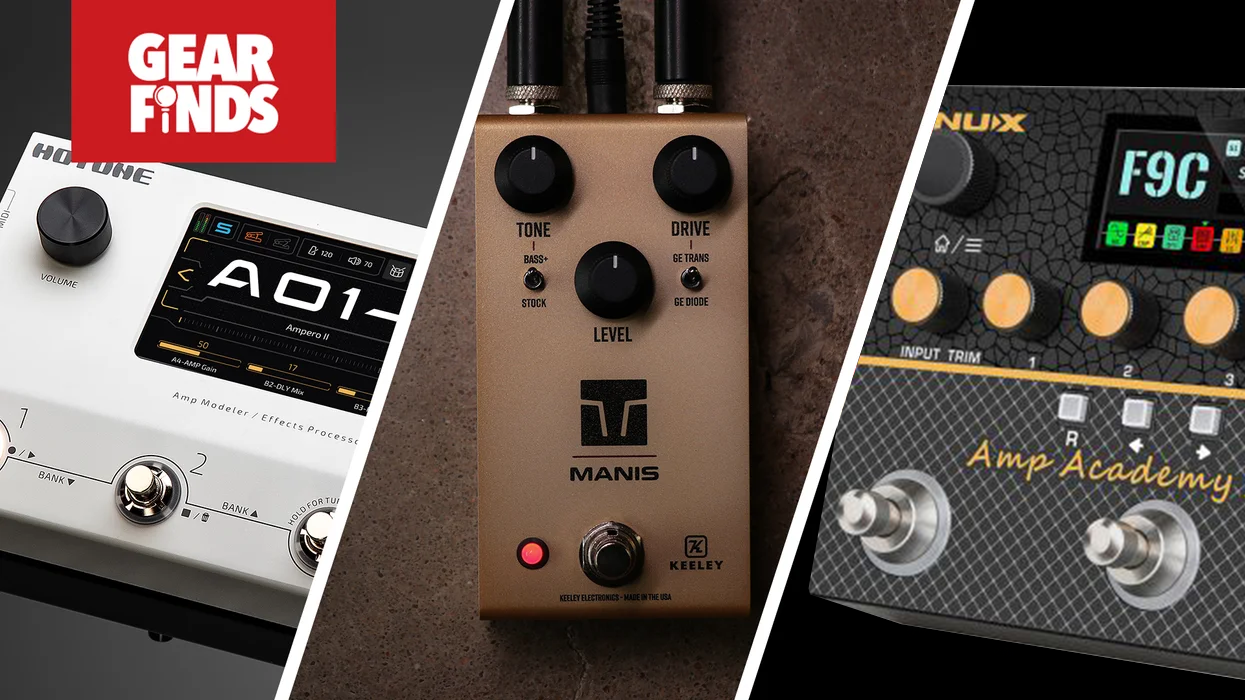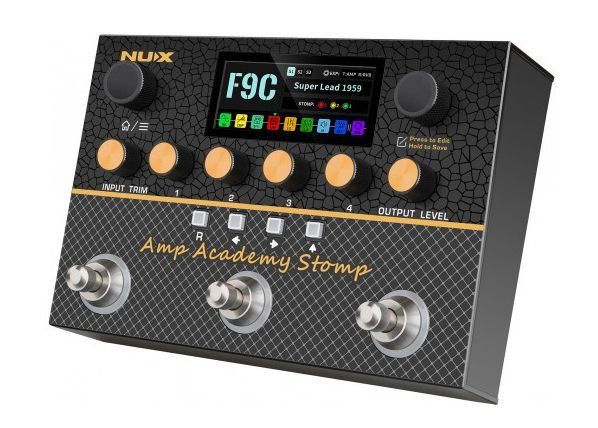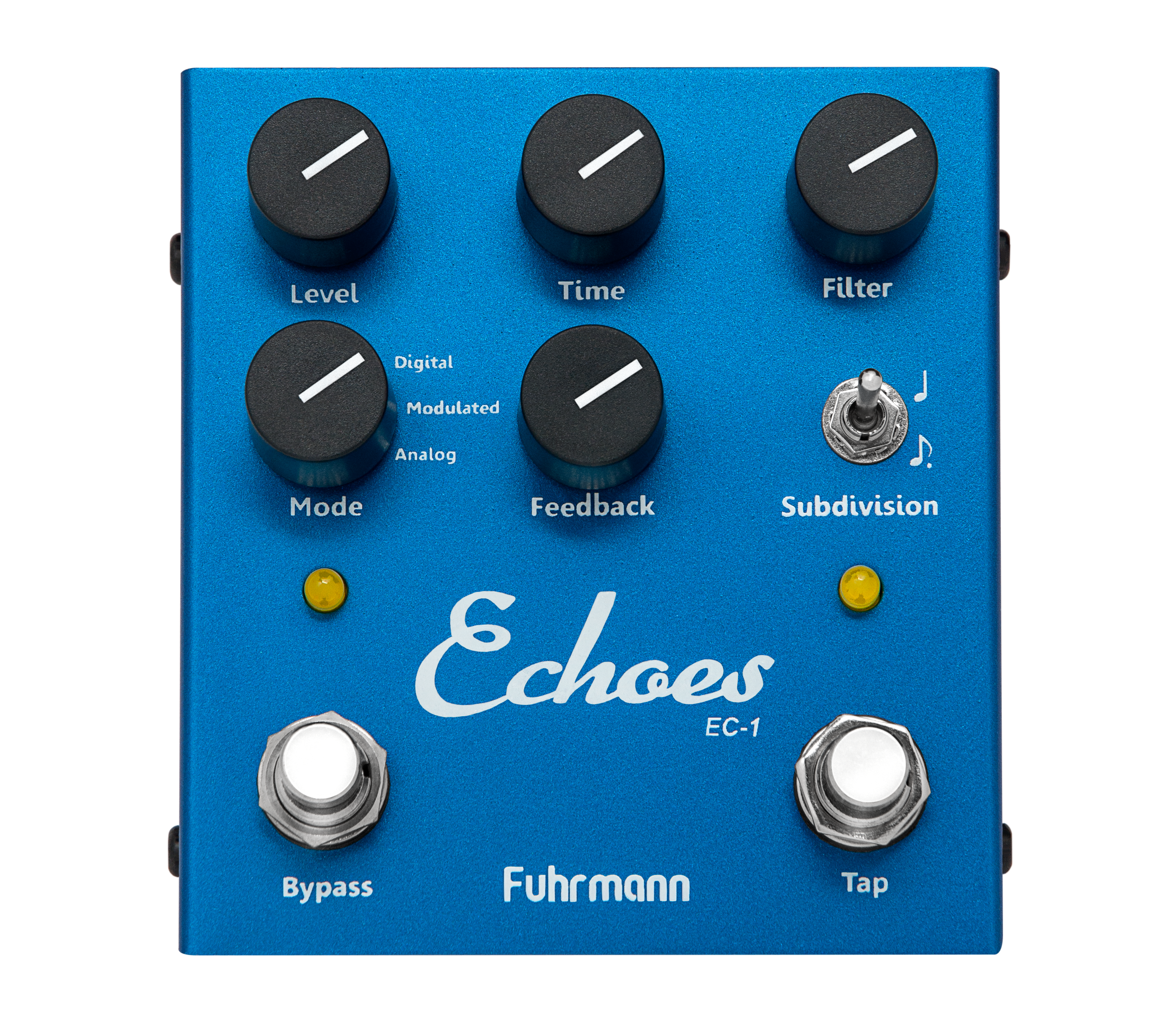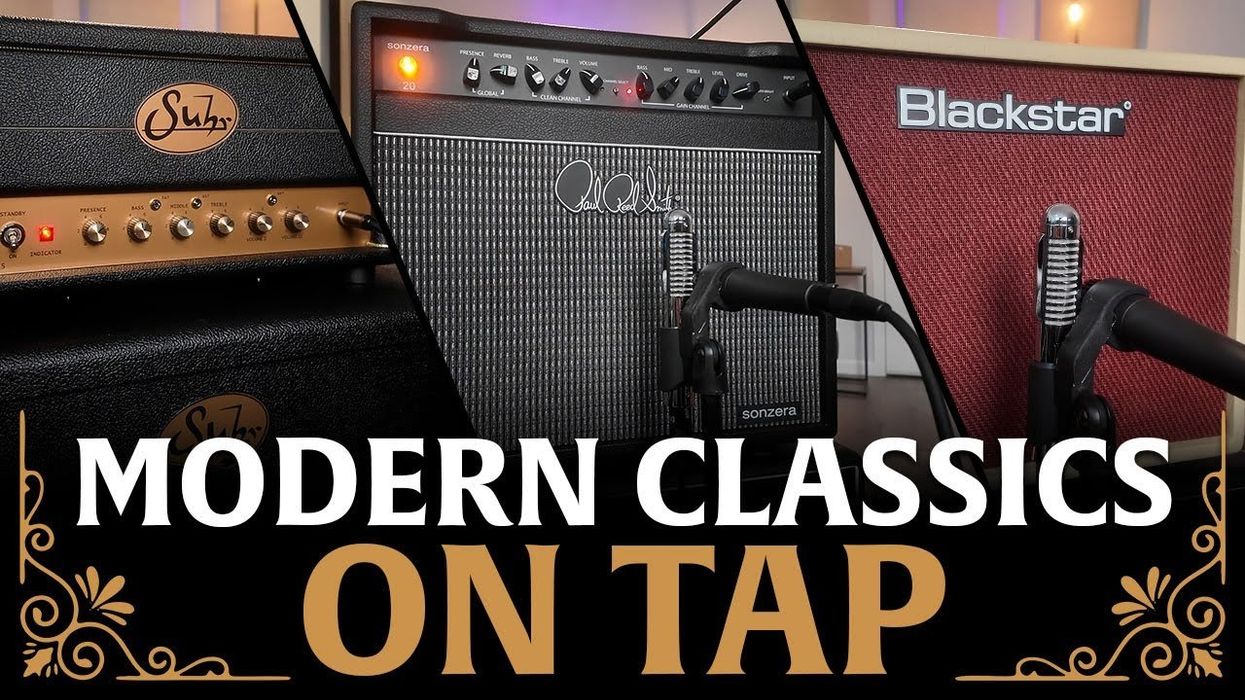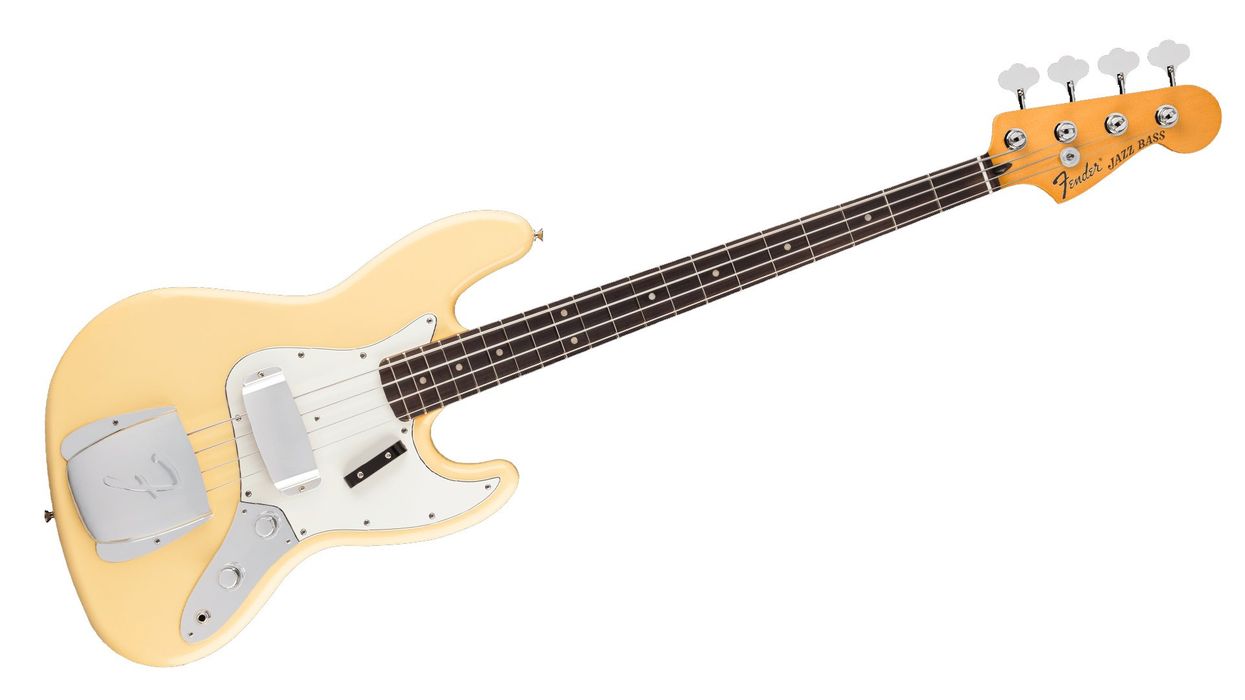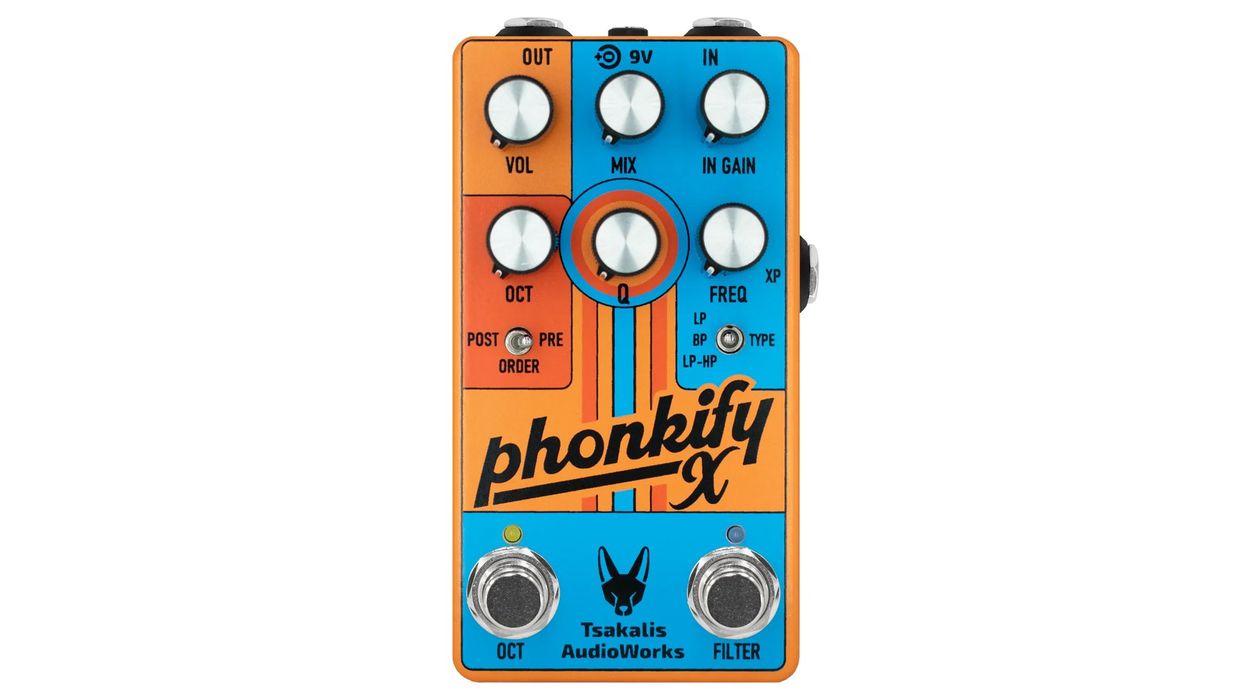Anyone aware of Robert Keeley’s knack for marrying timeless circuits to contemporary functionality knows the sense of anticipation when he decides to take on another classic. In the case of the pedals reviewed here, however, Keeley didn’t take on a single pedal. Instead, these three stomps from the new 4-in-1 Series each combine two classic circuits and then add the ability to use the clipping and EQ sections from each interchangeably. In many cases, these recombinations lead to untapped potential and unexpected sounds.
As a family, the Blues Disorder, Angry Orange, and Super Rodent (along with the Noble Screamer overdrive) have several features in common. All have drive, level, and tone controls with mini-toggles beneath the first and last of these. The pedals also allow the user’s choice of true bypass or buffered bypass operation, which can be switched on the fly with a two-second press of the footswitch. Each is built around a rugged printed circuit board and the pedals are all made in the U.S.
“The drive and tone mini-toggles mean you can choose the juicy, soft clipping and balanced response of the BB, or the hard clipping and midrange bump of the OC.”
Other basics shared throughout the line include a folded-metal enclosure measuring approximately 5" x 2.5" x 1.75", with jacks on the crown of the enclosure, and a standard center-negative power input for any 9-to-18-volt DC supply. I tested all three with a Fender Stratocaster and a Gibson ES-355, along with a tweed Deluxe-style 1x12 combo and a 65 Amps London head and 2x12 cab.
Blues Disorder Overdrive and Distortion
When Marshall released the BluesBreaker pedal back in 1991, which aimed at capturing the overdrive characteristics of its fabled Bluesbreaker amplifier, did they realize they were unveiling a classic in its own right? Few players thought it sounded much like a cranked mid-’60s JTM45 2x12 combo, but plenty of guitarists—John Mayer among them—dug its ability to slather succulent low-gain overdrive tone on a guitar signal. So, what happens if you combine this with another classic, the Fulltone OCD, and offer switching between the circuits or a hybrid mode? Voilà! The Blues Disorder.
Keeley isn’t the first to rethink these circuits. But his outside-the-box approach might make the pairing of the two more versatile than any rendition that has come before. The drive and tone mini-toggles mean you can choose the juicy, soft-clipping and balanced response of the BB, or the hard-clipping and midrange bump of the OC—and chain or double up on both. On the tone side, the BB position yields a transparent tone stage with simple high-frequency roll-off control, and the OC setting adds an active midrange boost with treble bleed from the knob. The brilliant part is you can mix one set of drive characteristics with the other’s tone stack.
The Blues Disorder quickly proved that the design premise is more than a novelty. The rich, warm overdrive of the BB side worked as an always-on tone sweetener or as a low- to medium-gain bump that can be tuned for blues, indie, or classic rock leads. That versatility is a big part of what made the BluesBreaker legendary in the first place. Set to dual OC, the heavier grind provides a canvas for harder-edged rhythm crunch and more in-your-face soloing.
The Verdict
The basic drive sounds here are arguably worth the price of entry. But the hybrid settings enable exponentially more shades of those original colors, many of which are dramatically different than the classic Marshall or Fulltone. I particularly liked the BB gain setting with the OC tone stage, which yielded rawer, throatier medium-gain OD. It’s important to note that output levels can change with switch changes. That inconvenience aside, I could barely find a bad sound in the Blues Disorder.
Angry Orange Distortion and Fuzz
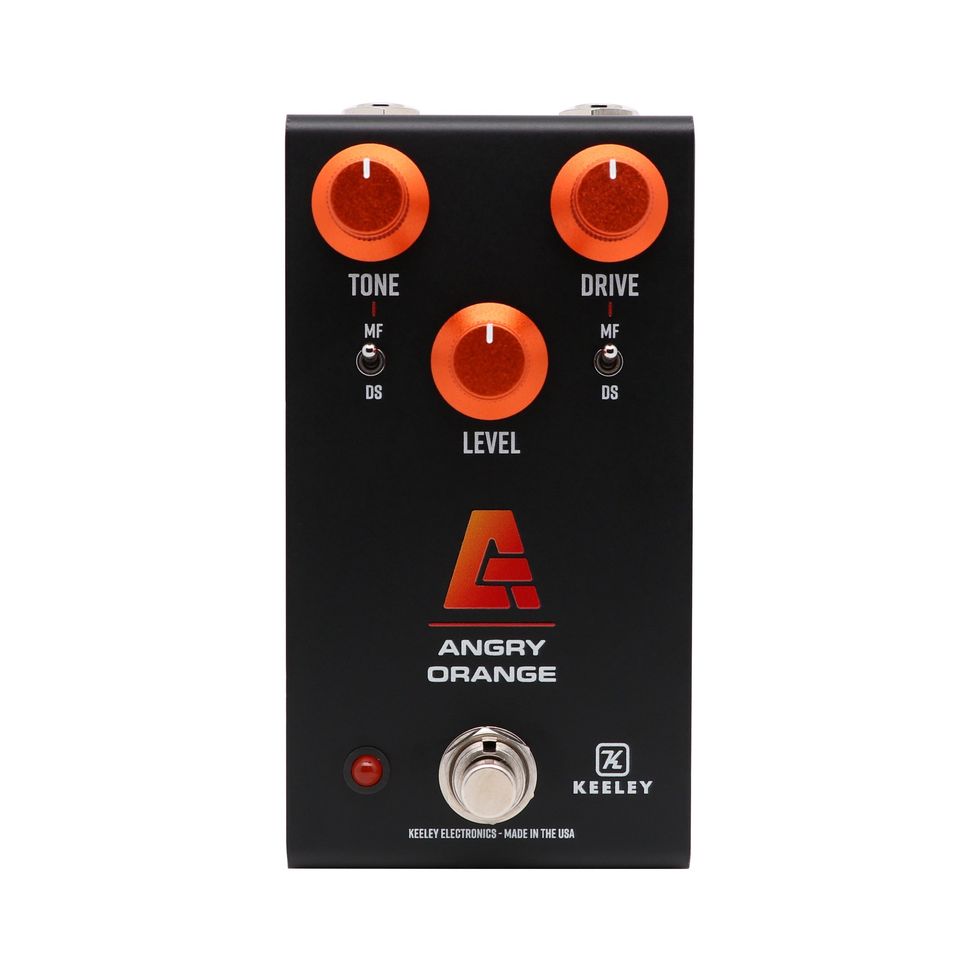
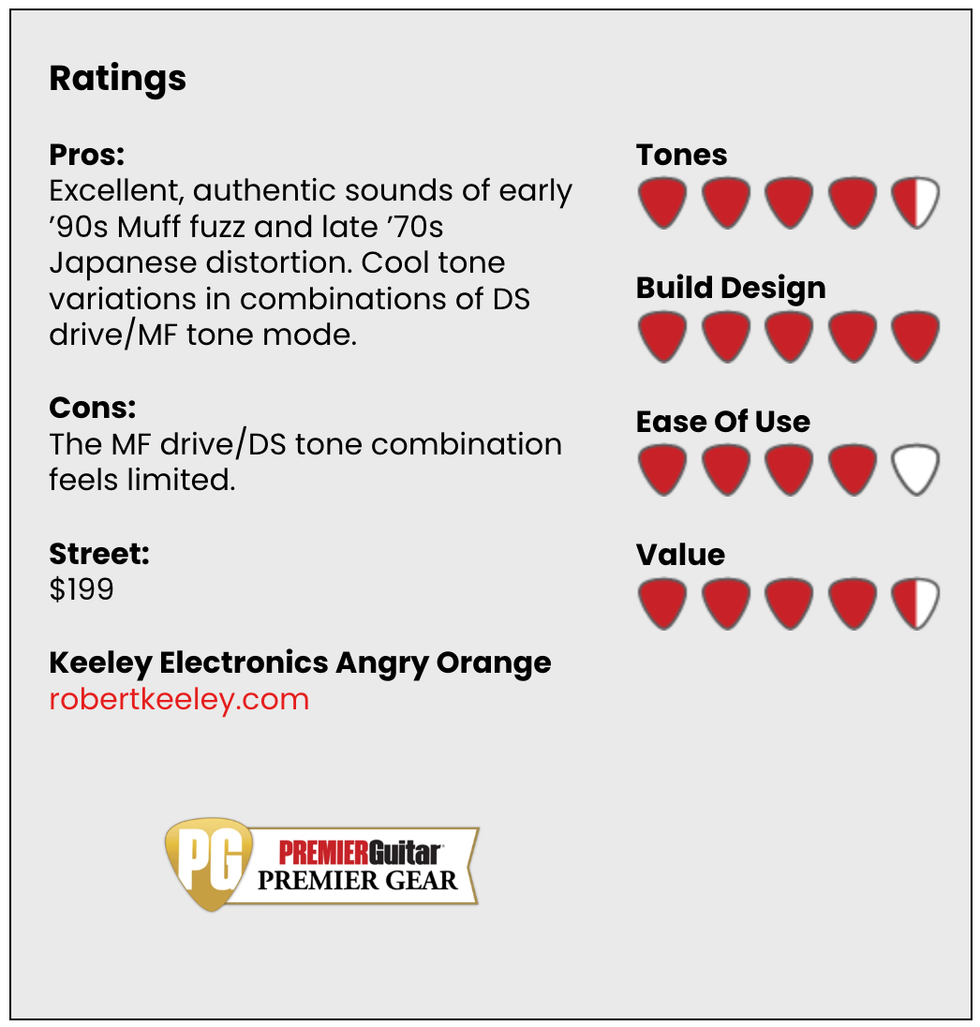
The subjects of Keeley’s shotgun wedding on this occasion are the Sovtek “Civil War” Big Muff on the fuzz side and a ’78 Boss DS-1 on the distortion end. These two effects occupy very different segments of the drive spectrum. But Keeley points out that, while voiced differently, both the Big Muff and DS-1 employed very similar tilt control tone stacks, making them, in Keeley’s view, ripe for hybridization.
Both circuits rely on diode clipping to help generate distortion, but the MF uses soft-diode clipping where the DS mode switches to more jagged-sounding hard-diode clipping, which lends edgy aggression. The mini-toggle in the tone stage taps a slightly scooped-sounding profile in the MF position, then delivers a midrange push in the DS position. Of course, these stages can be mixed to apply one frequency curve to another style of clipping.
Just a few minutes with the Angry Orange offers a surprising lesson in how close these two iconic distortion tools can come to sounding like each other. Both modes excel at thick retro-metal riffs and lurching doomy power chords in their natural clipping and EQ pairings, and add sizzle and edge to lead lines. And though the tone shift between them is clear when you throw the drive switch from DS to MF, they transition quite seamlessly.
The Verdict
Switching to DS for drive and MF for tone tastefully broadens the frequency range of that signature Boss distortion, yielding thicker lows and more jagged highs. The flip side of that coin—the MF drive with DS tone—struck me as less versatile, yielding a very boxy, hollowed-out frequency range. Still, players that like to tinker with filtered fuzz sounds might find many tones to use here, and on the whole there’s a lot to love and explore in this classic fuzz-distortion fusion.
Super Rodent Overdrive and Distortion
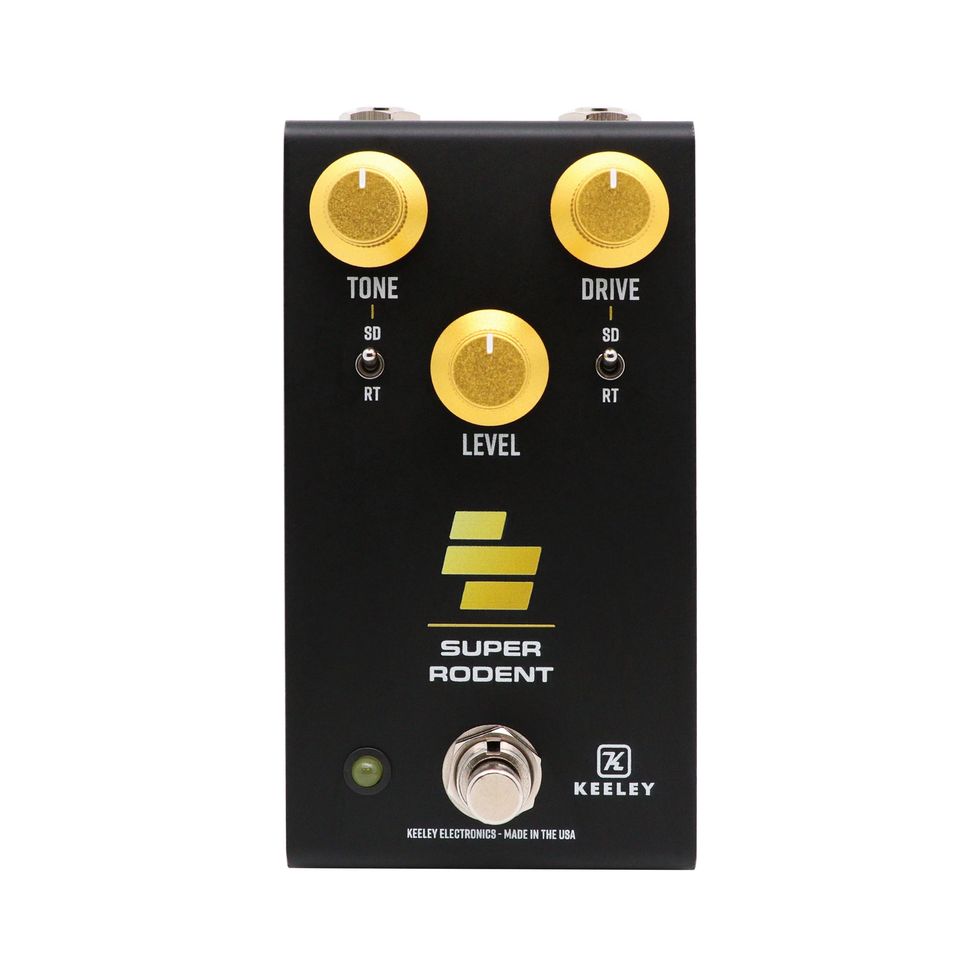
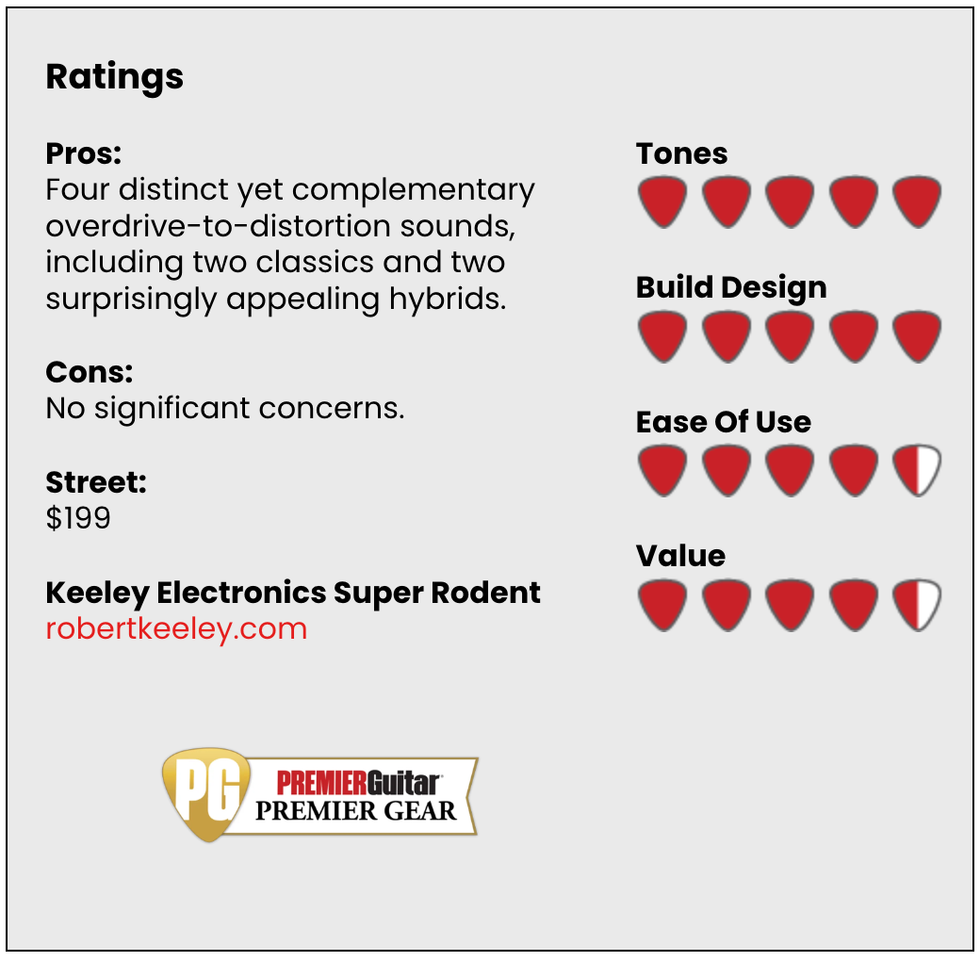
Skeptics that view overdrives and distortions as variations on a few basic design riffs might look at the Super Rodent and ask, “Didn’t we already visit this flavor combo in the Blues Disorder?” We would counter that the Super Rodent proves there are many dirt circuits out there in the deep blue sea. And Keeley’s pairing of these unexpected bedfellows underscores that notion, delivering two more variations of hard and slightly less-hard filth via the mix-and-match tone and drive formula. The inspirations this time out are the Pro Co RAT Distortion and Boss SD-1 Super Overdrive, two very different gain pedals that combine here surprisingly well.
Though the basic design is consistent with other pedals in the 4-in-1 series, the combination of circuits here results in four very different and distinct voices, compared to those that we’ve heard so far. The RAT-style RT position of the drive switch accesses the heavier, more aggressive hard-clipping distortion in the pedal, while the SD setting yields a more tube-like, soft-clipping overdrive. Here, the tone switch changes things up significantly—from a basic, easily managed treble roll-off in the RT position to an active low-pass filter that provides rangier low and high end in SD mode.
To my ear, the Super Rodent proved the most successful of the hybridization efforts among the 4-in-1 pedals reviewed here. That observation is not meant to detract from the cool sounds the others achieve, but simply point out how well the Super Rodent expands the potential of these two circuits. Robert Keeley obviously knows his overdrive onions so it’s no surprise that the renditions of the classic RAT and SD-1 are so accurately achieved in their natural drive and tone switches. Flip the drive and tone settings against type in either direction, though, and the sonics expand dramatically.
The Verdict
Settling in quickly to the easy, juicy tone-thickening of the SD drive setting, I found myself totally seduced by this early Japanese overdrive circuit with the unique RAT tone stack grafted on. There’s a little more harmonic swirl in the midrange and a pillowy compression that makes things sound bigger and thicker overall, if a little less punchy. The result? A new overdrive classic that, to my knowledge, never existed. Conversely, mating the RT drive to the SD tone adds aggression, muscle, and bark to the fabled Pro Co sound. In every combination it’s great stuff!






